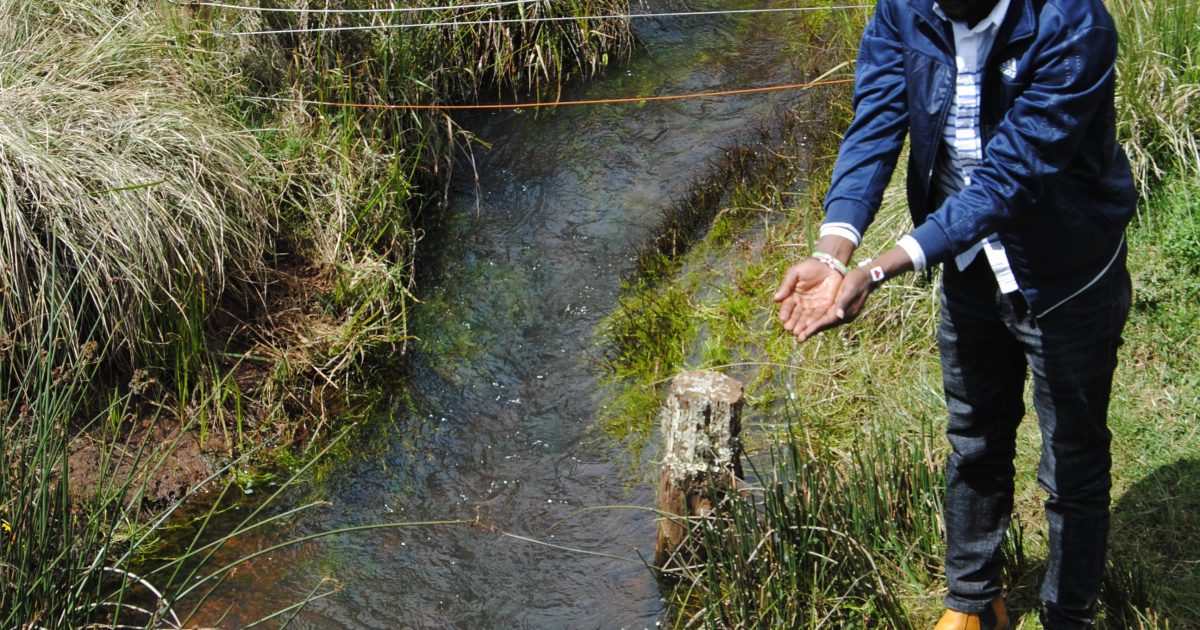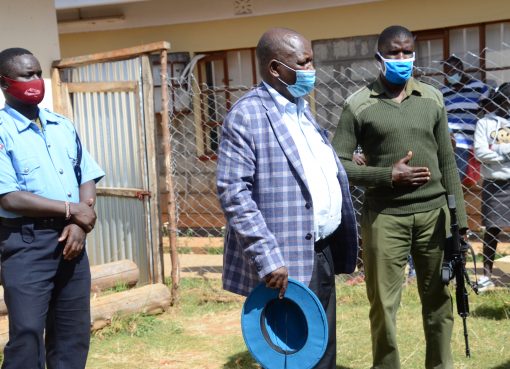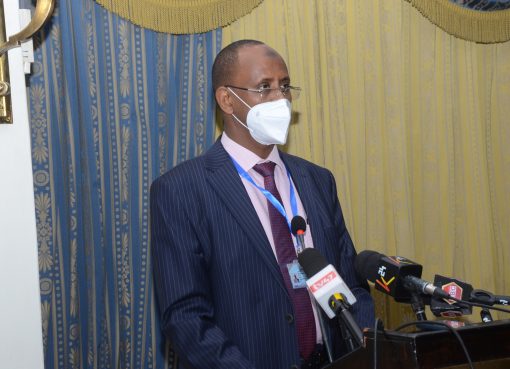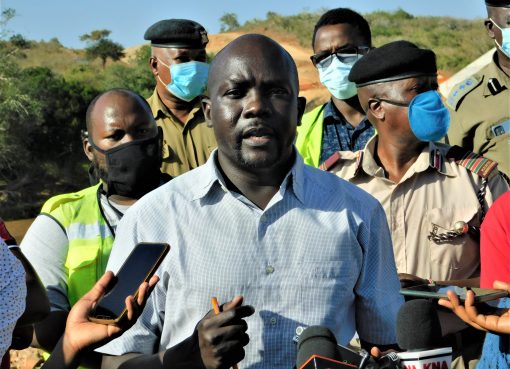The Mara-Serengeti ecosystem stretches 24, 000 square kilometers with a perennial Mara River flowing across the game reserve, according to data from the Narok Department of Tourism.
Being one of the largest of its kind in Africa, the protection of Mara water basin is key in the survival of millions of fauna and flora species across the ecosystem.
Masses of foreign and local tourists flock to the Maasai Mara game reserve on the Kenyan side and Serengeti National Park in neighbouring Tanzania to see a host of wild life in their natural habitat.
Kenya News Agency in collaboration with World Wide Fund (WWF) sought to explore the conservation efforts of River Mara at the south western part of Mau forest which is the source of tributaries feeding river Mara.
Narok Ecosystem Conservator (EC) Mr. Mwai Muraguri said the South Western block extends in Nakuru, Bomet and Narok counties.
Muraguri explained that the great Mara River is mainly fed by rivers Nyangores and Amala that originate from the Mau part of the forest.
Kiptunga forest that stretches to over 1000 square kilometers in Nakuru County is the source of about 50 tributaries that feed River Amala.
Enapuiyapui wetlands, a source of one of the major tributaries that form River Amala, is now rejuvenating after years of destruction.
According to the residents, the wetlands was on the verge of drying up due to rampant human activities before the government through Ewaso Nyiro South Development Authority (ENSDA) erected a fence around the wetlands.
Kiptunga WRUA Chairman Charles Ole Kursha said a significant water increase has been felt since the wetlands was fenced in February this year.
The chairman said increased cutting down of trees and farming in the upper side of the wetlands and grazing at the site led to a decrease of the water levels.
“We were afraid because we witnessed the water levels going down to a point of almost drying up as there was rampant human activities around the wetlands,” said Ole Kursha.
He said when ENSDA fenced the wetlands, the reefs started growing thereby covering the water that comes from underground hence increasing the volumes of the water.
“The government also banned farming on the upper ground which was causing soil erosion that drained in the wetlands,” explained Ole Kursha.
He called upon the residents living around the forest to conserve it with a passion to protect the environment for the future generations.
“I urge the society to conserve indigenous trees as they do not consume a lot of water compared to exotic breeds,” he said.
At the same time, Ole Kursha challenged the government to use metallic posts to fence the catchment area saying the cider posts used currently may not last for long.
Mr. Stanley Naimodo, a youth living near the forest commended the government for the recent evictions in the forest saying it would increase water levels in the mega water catchment area.
“We, the young people are now championing for the conservation of the indigenous forest as many trees like oak take hundreds of years to mature,” he said.
At Chepalungu forest in Bomet County where several streams that drain to River Nyangores originate, the forest is rejuvenating after it was destroyed in the post-election violence in the year 2018.
Only countable trees that were hosting beehives were spared by the community who expressed their anger through cutting down trees.
Chepalungu Community Forest Association (CFA) chairman Mr. Joseph Towet said about 4800 hectares of forest was destroyed in the two blocks of Chepalungu forest.
“The Kipsigis community believe that cutting down a tree that is hosting beehives will bring a permanent curse to your family. That is why the few trees were spared,” he said.
“The western part called Kapchumebe has an area of 4000 hectares while the eastern side called Siongiroi forest is 800 hectares,” said Towet.
According to Towet, the climate changed immediately after the forest destruction and what used to be a cold chilly weather turned into hot weather.
“Before the trees were cut, the rains used to be frequent. The farmers would plant even three seasons per year, but after the destruction, the rains have disappeared as we receive a handful amount of rains,” he told the press.
Two years after the destruction, Towet explained that Kenya Forest Service (KFS) engaged the residents in educating them on the importance of protecting the forest where they rolled out several programmes that could help the residents conserve the forest.
He said this led to the formation of forest user groups that help in conserving the forest as they benefit from it.
The groups include: Plantation Establishment Livelihood Improvement Scheme (PELIS) where members have planted fruit trees around the forest and Beehive group whose members keep bees for economic benefit.
Other groups include the herbalist group whose members get medicinal plants from the forest, grazer group whose members are allowed to graze their cattle in the forest land and brick makers group whose members make blocks for sale.
“The over 200 members conserve the forest as they benefit from it. Already we have planted 20 hectares of exotic tress and fenced to avoid human interruption,” said Towet.
Towet recalled how the elders would get herbs from the forest to treat any disease making the society very strong and healthy.
“As a community, we now know the impact that we have felt from destroying the forest and it’s now upon us to work to ensure the forest is back,” said the WRUA chairman.
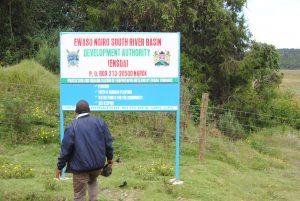
Mr. Joseph Kilong, a resident of Chepalungu Sub County said the streams originating from the forest decreased when the forest was destroyed.
“I ask those destroying the Maasai Mau forest to visit us here in Chepalungu and see the effect of cutting down trees. The weather here is now very hot compared to the days before the post-election violence,” said Kilong.
Nyangores Forest in Narok County is another source of several streams that drain to river Nyangores and Amalo River.
When we visited the forest, we met Masese Community Forest Association (CFA) members who are in the front line of conserving the forest erecting a tree nursery.
The forest is one of the best conserved forest in the county with numerous ecotourism attraction sites.
Masese CFA chairman Mr. John Mutai said they have won several trophies for being the best in conserving the forest that is a home to elephants, monkeys and hundreds of birds.
“The government alone cannot manage to conserve the forest. It requires a collective effort of stalkholders who will help in protecting illegal loggers from entering the forest,” he said.
He reiterated that the benefits of preserving the forest are numerous as the forest could be an alternative source of income to the residents.
“We are at the eve of starting eco-tourism and we are targeting visitors who flock to the Maasai Mau forest to come in the forest land,” said Mutai adding that features like Tenwek water fall, natural bridges and natural caves among others will attract both local and foreign tourists.
He added that CFA has trained six scouts who patrol the forest and give information to KFS whenever they find something unusual happening in the forest.
“We have owned the forest, and we have put these scouts to help in protecting the forest against any form of destruction,” said Mutai.
The group’s secretary Ms. Caroline Nyangelei said they have educated their fellow women to use alternative source of fuel instead of burning charcoal in the forest.
“The women groups sat down and resolved no one will be allowed to burn charcoal or get firewood from the forest,” said Nyangelei.
During the Mara River Day celebrations marked on 14th this month, the Principal Secretary in the State Department for East Africa Communities Dr. Kevit Desai called for a collective effort in conserving the Mara Ecosystem.
The function was also attended by Bomet Governor Dr. Hilary Barchok, Lake Victoria Basin Commission (LVBC) Executive Secretary Dr. Ali Said Matano and a host of Members of the County Assembly from Narok and Bomet counties.
“You will agree with me that the sustainability of the Mara ecosystem depends on all of us to ensure we conserve the environment by planting more trees to protect the water catchment areas,” said Dr. Desai.
He reiterated Kenyan’s commitment to conserve the environment saying the government is keen in protecting the mega Mau forest that is the source of River Mara.
Bomet Governor vowed to put more resources in the conservation and protection of the Mara owing to the fact that the river Mara originates from the county.
“As a custodian of the ecosystem, I assure you that the county government of Bomet will commit its resources and efforts in conserving this great ecosystem for the future generations,” he reiterated.
He recommended the Ministry of Education to include Conservation as a unit to be taught from Early Child Development level saying it is important for the learners to internalize the importance of conserving the environment.
The governor asked politicians to separate issues of conservation from politics as preservation of the environment had a direct impact on livelihoods.
“It is now clear that the issue of conservation of the forest is no longer a political issue but a matter affecting livelihoods,” reiterated the Governor.
Dr. Matano who hails from Tanzania said the citizens of the two countries now own the Mara ecosystem and conserve it with a passion.
“The people no longer view the conservation of Mara as a government’s initiative but have owned it as one of their responsibilities,” he said.
By Ann Salaton


